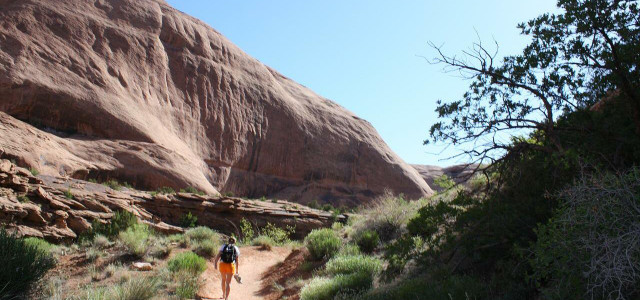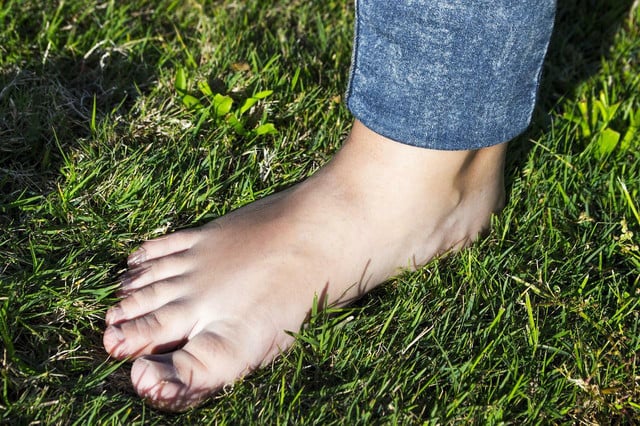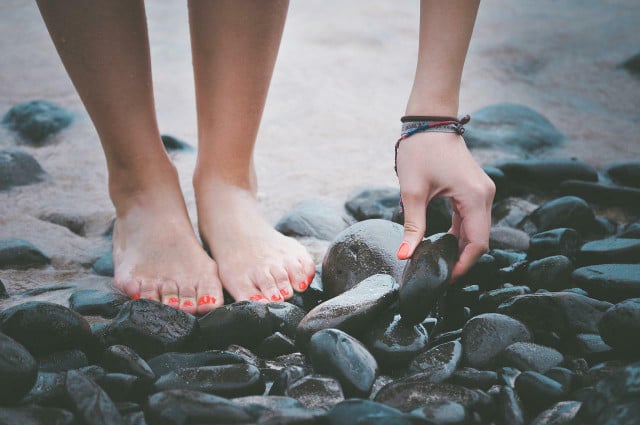
Barefoot walking is a trend that is becoming more and more widespread. In this article you will find out what advantages it brings, what you have to pay attention to when hiking and where you can go hiking barefoot in Germany.
to walk barefoot has many physical benefits. So why not go hiking barefoot too? You don’t need any expensive equipment to do this – all you have to do is take off your shoes. We explain the advantages of barefoot hiking, where it is possible in Germany and what you should consider when hiking without shoes.
Barefoot hiking – but where?
In principle, barefoot hiking is possible everywhere, but not always recommended. There is a higher risk of injury on some hiking trails due to shards, splinters, thorns and sharp stones.
In order to ensure an optimal hiking experience, you should inform yourself in advance about the condition of the route, for example about a hiking app. Many health resorts offer specially created barefoot paths with changing surfaces made of grass, gravel, Clay, sand and wood. The website barfusspark.info offers you a good overview of barefoot paths throughout Germany.
Barefoot Hiking: Is It Really Better?

(Photo: CC0 / Pixabay / cromaconceptovisual)
Man was born without shoes, so walking barefoot is the most natural form of locomotion. Walking barefoot has many advantages: it stimulates the sense of touch on the soles of the feet and enables intensive contact with nature. It is ideal for sensing, touching and feeling the ground. When hiking barefoot, you have to pay more attention to the path and therefore walk more slowly. So you take more time for your hike and enjoy your trip more.
In addition, walking barefoot also has some health benefits: It strengthens the muscles, ligaments and joints of your feet. The blood circulation in the legs is increased, which, for example, prevents vein problems. In shoes, we usually walk heel-heavy – barefoot we step on the whole foot or the ball of the foot, which results in better running economy. After the hike, the feet have good blood circulation, are warm, tingle a bit and feel very comfortable for most people.
Sports physicians have conducted a comparative study in Germany and South Africa. According to the study, barefoot walking is more common in South Africa, regardless of social status. The study shows that people from South Africa who have often walked barefoot since the beginning of their lives are less likely to have flat feet. Wearing shoes all the time has an unfavorable effect on the shape of our feet. Walking barefoot can at least partially prevent this unfavorable development.
by the way: If you want to slowly approach barefoot hiking, you can only think about it barefoot shoes to purchase.
Barefoot hiking: You have to pay attention to this

(Photo: CC0 / Pixabay / Pexels)
Anyone who has never hiked barefoot should take it slow. The first barefoot hikes shouldn’t last longer than two to three hours so that your feet can get used to the change – after all, we otherwise walk around in shoes all day.
The ideal temperature for barefoot hiking is between 20 and 25 degrees. The hiking trail should have a varied surface, preferably grass, sand or earth. Natural forest and field paths are well suited for a barefoot hike. Gravel or gravel paths are not suitable for a shoeless hike.
You don’t have to be afraid of scrapes or scrapes when hiking barefoot – they don’t usually happen. The important thing is to make sure that you lift your feet high enough and don’t shuffle so that your toes don’t hit roots. In addition, you should always pay attention to the path so that you do not injure yourself on sharp stones or thorn branches. You should take a little more time, especially going downhill. Because without shoes, only your feet cushion your steps. A careful and slow pace downhill is easy on your joints.
Tip: When hiking barefoot, always pack light shoes or sandals in your backpack for emergencies. So you can survive gravel paths or other obstacles without injury.
Read more on Techzle.com:
- Sustainable hiking: 5 tips for the harmony between people and nature
- Robust, comfortable, sustainable: 6 hiking backpacks in comparison
- Beautiful feet: tips for natural care